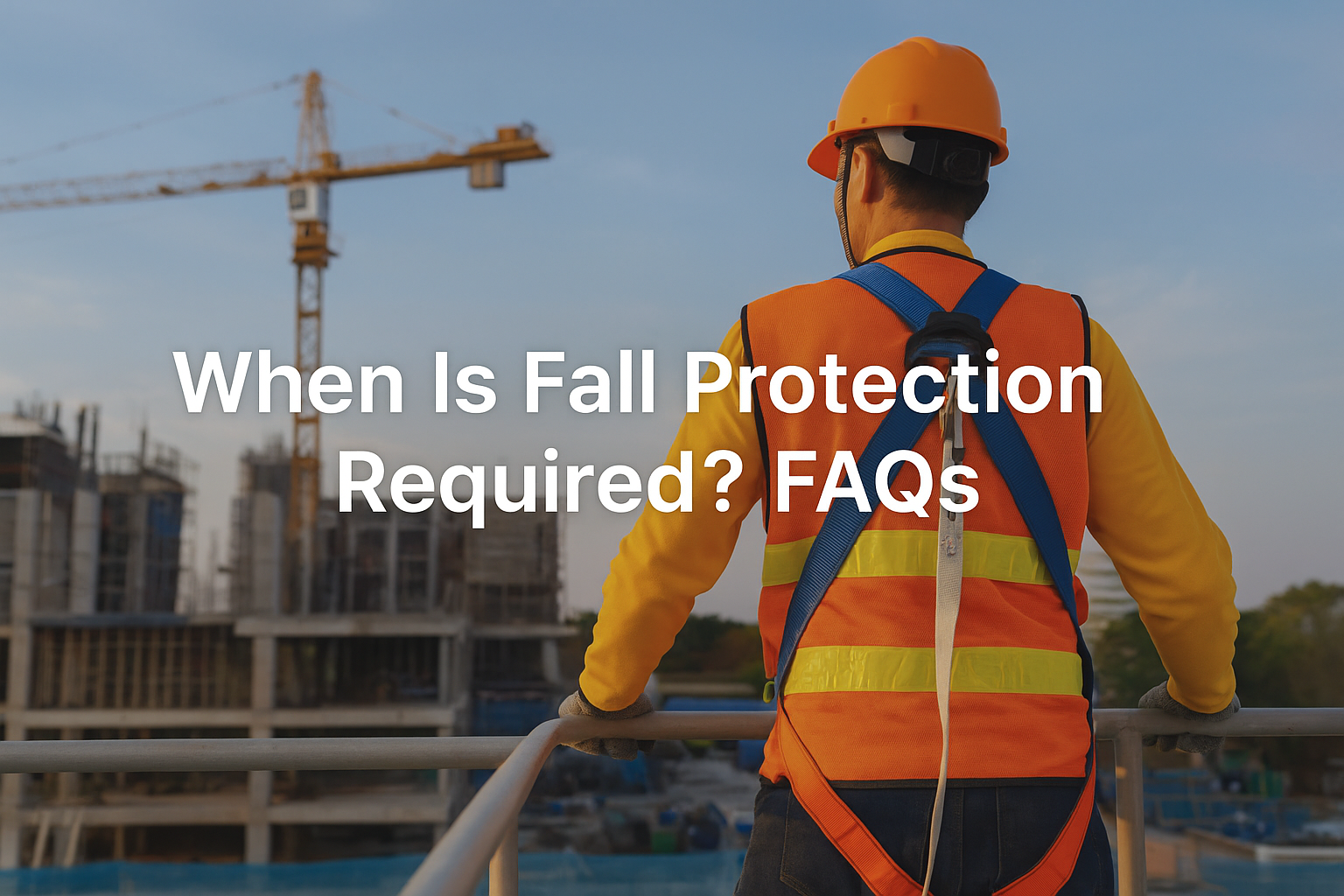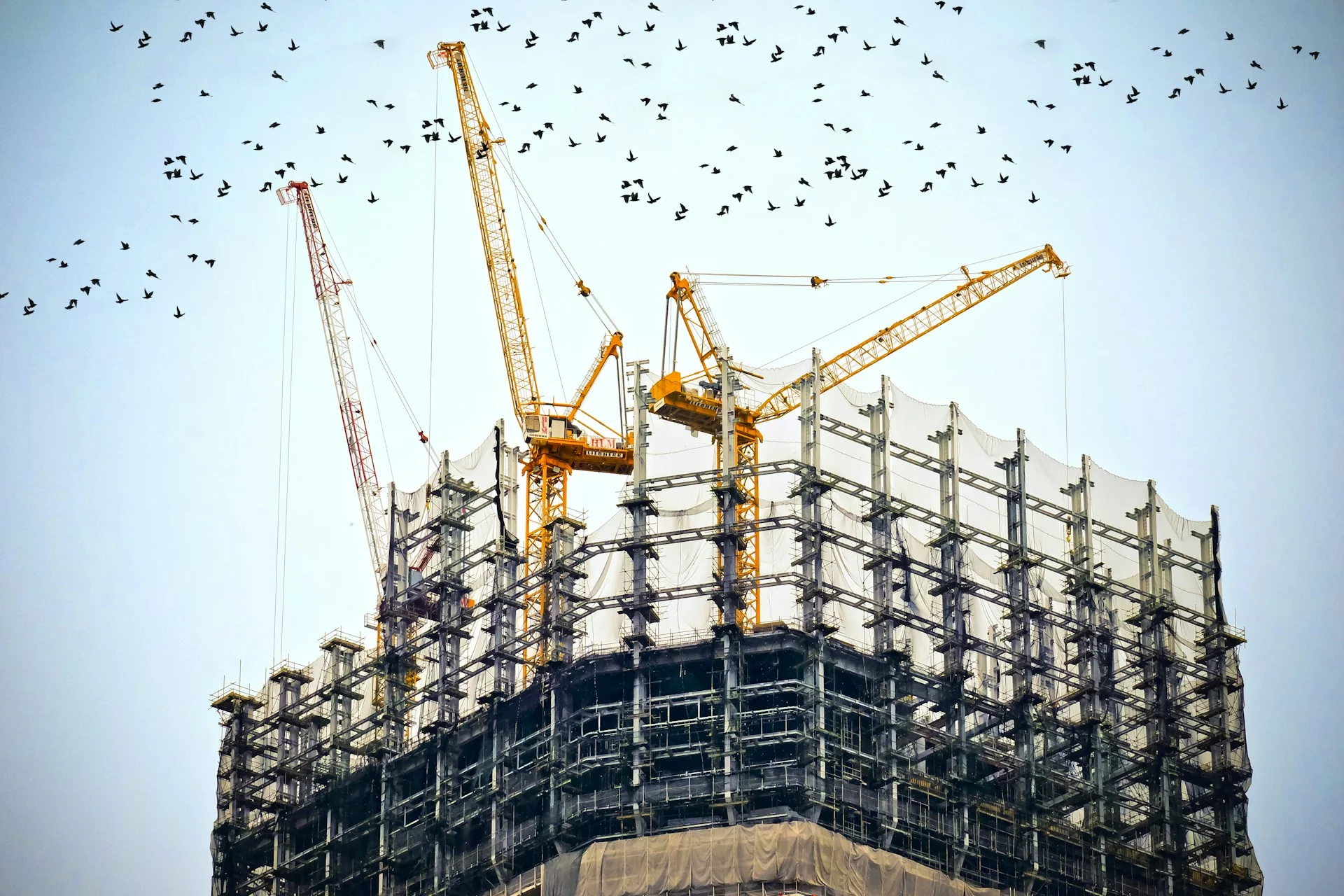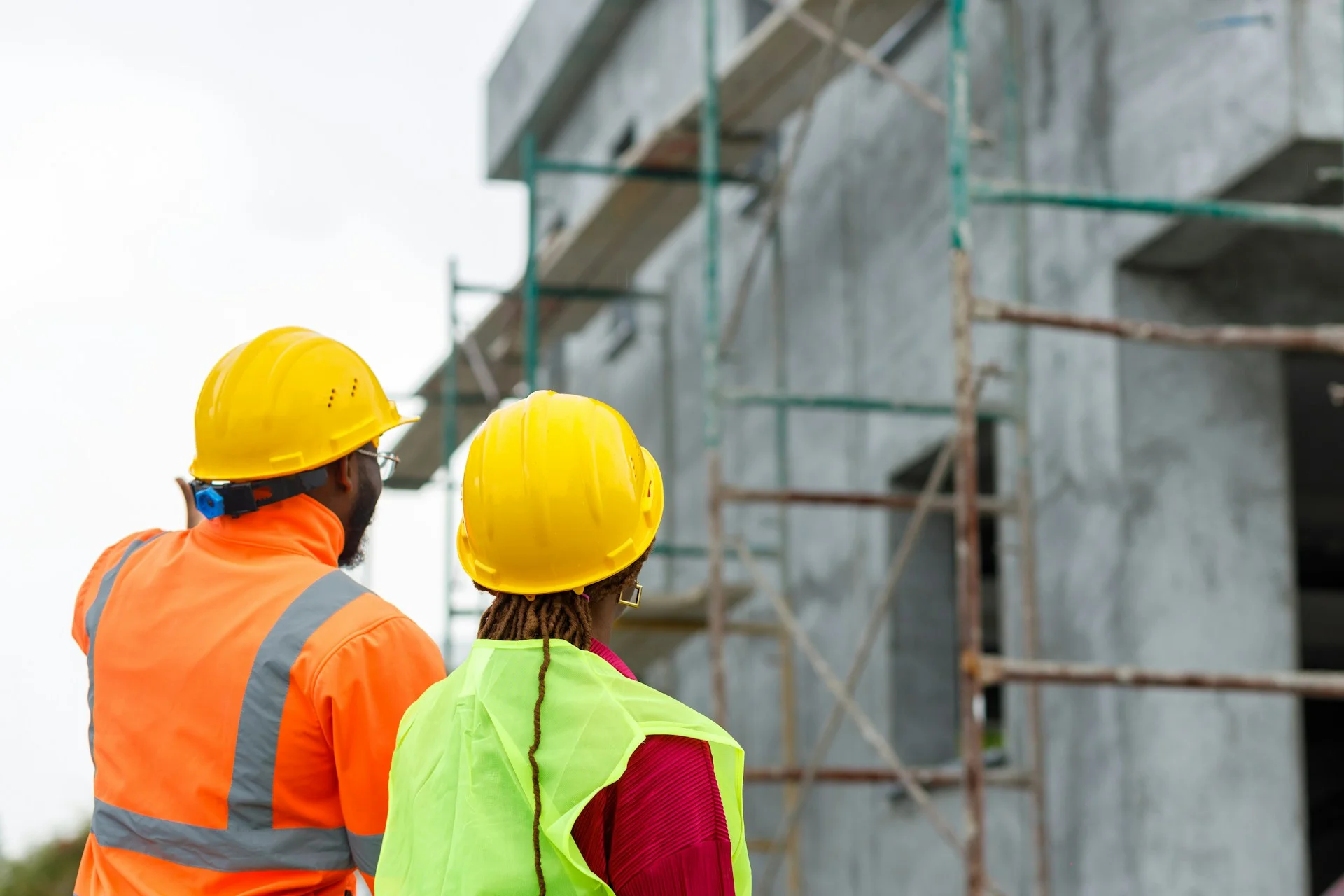
Falls are the leading cause of serious workplace injuries, which is why employers and crews alike often ask the big question: when fall protection is required. The answer depends on where you’re working, the industry, and the type of task being done. OSHA and other safety regulators have clear thresholds for when fall protection must be in place, and failing to meet them can mean fines, accidents, and preventable tragedies.
At TPR Industrial, we’re here to make safety straightforward. Whether you’re outfitting a team with fall protection systems, choosing the right gear for rooftop work, or just making sure you’re OSHA-compliant, this guide breaks down exactly when fall protection is required, how it applies across industries, and what gear makes the difference.
When Fall Protection Is Required
Fall protection is required when workers are at a risk of falling from elevated platforms, scaffolds, roofs, ladders, or into floor openings. OSHA sets different thresholds for different industries:
- General industry: Protection required at 4 feet.
- Construction: Protection required at 6 feet.
- Shipyards: Protection required at 5 feet.
- Longshoring operations: Protection required at 8 feet.
- Over dangerous equipment: Protection required at any height.
So if you’re wondering when is fall protection required, the short answer is: always, when there’s a chance of serious injury from a fall.
When Is Fall Protection Required in the Construction Industry?
One of the most common questions is when is fall protection required in the construction industry. The standard rule is that OSHA requires fall protection at six feet or higher. That means if your crew is working on a roof, erecting steel, walking near unprotected edges, or installing equipment above six feet, you must use protection systems.
It doesn’t stop there, construction also involves unique hazards like scaffolding, skylights, or floor openings. If a worker can fall six feet or more through one of these hazards, proper guardrails, covers, or arrest systems are mandatory.
Fall Protection Is Required When…
It’s simple: fall protection is required when employees are exposed to a fall hazard. That could mean walking a beam during steel erection, climbing a ladder more than 24 feet, or installing HVAC units on a low-slope roof. If you’re not sure whether your job requires fall protection, ask yourself this: could a worker fall and get seriously injured? If the answer is yes, the system is required.
When Is Fall Protection Required on Scaffolding?
Scaffolding has its own rule: when is fall protection required on scaffolding? OSHA requires it at 10 feet or higher above a lower level.
That means any crew working on scaffolds must be tied off or protected with guardrails once they pass the 10-foot mark. Keep in mind that mobile scaffolds like scissor lifts are included in this requirement, though aerial lifts follow slightly different standards.
Fall Protection Is Required When Working Above What Height?

Another frequent question: fall protection is required when working above what height?
- 4 feet in general industry
- 5 feet in shipyards
- 6 feet in construction
- 8 feet in longshoring operations
- At all heights when above dangerous equipment
It’s easy to forget that “short” falls can be deadly. Even at 4 feet, a fall can result in broken bones, head injuries, or worse. That’s why pairing your system with head protection is so critical, it protects from both falls and falling objects.
Types of Fall Protection Systems
Once you know when fall protection is required, the next step is choosing the right type of system. OSHA’s hierarchy of controls puts priority on preventing falls altogether before catching them.
Guardrail Systems
Guardrails are considered a passive protection system, meaning they protect everyone on-site automatically without needing worker tie-offs. They’re best for rooftops, platforms, and floor openings.
Safety Net Systems
Safety nets catch workers if they fall and are often used in large-scale construction. OSHA requires that they be strong enough to absorb the force of a 400-pound bag dropped from height.
Personal Fall Protection Systems
A personal fall protection system, often called PFAS, includes a full-body harness, lifeline, and anchor point. These systems are essential when guardrails or nets aren’t practical. Using self-retracting lifelines provides extra mobility while maintaining constant protection.
Mobile Fall Protection Systems
Sometimes the jobsite changes daily. A mobile fall protection system gives you flexibility by bringing the anchor and tie-off points wherever the crew is working.
Fall Protection Rail Systems
For long-term or permanent workspaces, a fall protection rail system creates a reliable barrier along roof edges or platforms. These systems are durable, OSHA-compliant, and protect entire crews.
Practical Scenarios of When Fall Protection Is Required
Roofing Work
Working on rooftops is one of the most common fall hazards. On low-slope roofs, OSHA allows contractors to use systems like warning line systems, harnesses, or safety monitors for small projects. On steep roofs, harnesses and anchors are a must, which is why outfitting your crew with the right roofing systems is essential.
Scaffolding
We’ve already covered that scaffolding requires protection at 10 feet, but don’t forget assembly and disassembly, workers need protection here, too.
Steel Erection
Steel erection tasks require fall protection at 15 feet, though connectors may work up to 30 feet before tie-offs are required.
Ladders
When climbing ladders more than 24 feet, fall protection equipment like ladder safety systems or cages must be in place. Check out our ladder systems for solutions that keep workers compliant and safe.
How to Stay Compliant with OSHA Requirements

Knowing when fall protection is required is step one. Step two is ensuring your workplace actually meets OSHA standards. Here’s a checklist approach:
- Assess Risks: Identify hazards like edges, holes, scaffolds, or dangerous equipment.
- Select Systems: Choose guardrails, nets, or personal fall arrest based on the task.
- Train Workers: Every worker must be trained in hazard recognition, safe use, and rescue procedures.
- Inspect Equipment: Harnesses, anchors, and rails should be inspected before every shift.
- Keep Records: Document inspections, training, and fall protection plans.
Consequences of Ignoring Fall Protection
Fall protection violations are OSHA’s #1 most cited safety issue, year after year. The consequences are steep:
- Lives Lost: Falls are the top cause of fatalities in construction.
- Fines: Up to $15,625 per violation, and over $150,000 for repeated or willful violations.
- Downtime: Injuries shut down projects, delay deadlines, and raise insurance costs.
Simply put, the cost of not providing fall protection far outweighs the investment in the right gear.
Protect Your Crew Every Time
So, when fall protection is required? Anytime there’s a chance of serious injury from a fall. The exact height depends on the industry and job, but the principle is the same: workers must be protected.
At TPR Industrial, we provide OSHA- and ANSI-compliant solutions built to last. From anchors and harnesses to rails and mobile systems, our fall protection systems keep your team safe, compliant, and ready to focus on the job.
FAQs About When Fall Protection Is Required
What is the minimum height for fall protection in construction?
OSHA requires fall protection at 6 feet in the construction industry.
When is fall protection required on scaffolding?
Scaffold workers must be protected at 10 feet or higher above a lower level.
Fall protection is required when working above what height in general industry?
General industry requires protection at 4 feet or higher.
When is fall protection required over dangerous equipment?
At any height. Workers must always be protected when working above machinery, conveyor belts, vats, or electrical hazards.
What are examples of fall protection systems?
Guardrails, nets, harnesses, anchors, mobile systems, and fall protection rail systems are all OSHA-approved solutions.
 English
English Español
Español
